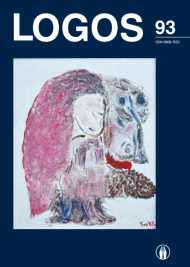Lietuvių kalviškųjų „saulučių“ simboliai skirtybių ir bendrybių priešpriešos lauk
A Sun-like Cross Symbols of the Lithuanian Smithery in the Field of Confrontation of Cultural Differences and Commonalities
Author(s): Vytautas TumėnasSubject(s): Fine Arts / Performing Arts, Customs / Folklore, Sociology of Culture, Politics and Identity, Identity of Collectives
Published by: Visuomeninė organizacija »LOGOS«
Keywords: cross crafting; symbolism of smithed sun-like crosses; national identity; resistance;
Summary/Abstract: The article analyzes the tradition of Lithuanian iron minted sun-like crosses, as the visual sign and instrument of socio-cultural power. It examines how communities and state authorities could have seen the unifying and dividing codes at the same time in the same signs. The personal stories of blacksmiths reveals how the iron sun-like crosses were used in various ways: The construction of national identity, the preservation of cultural peculiarity or initiating the conflicting intercultural communication, and the isolation and resistance to soviet cultural colonisation. The investigation uncovers how another non-conflicting and more acceptable interpretation for the soviet ideology was attributed to the smithed sun-like crosses. This interpretation came about through communication with the government institutions. Through a precise semiotic, historical and comparative analysis, the complicated and international aspects of their meaning, origin and migration are disclosed. the origins of the serpent-like rays may be traced not only from pre-Christian imaginary, they are found in the Gothic/Renaissance art motifs of northern Italy. by the preservation of sun-like crosses the folk art tradition during the soviet period made their Christian semantics viable at the same time.
Journal: LOGOS - A Journal of Religion, Philosophy, Comparative Cultural Studies and Art
- Issue Year: 2017
- Issue No: 93
- Page Range: 109-116
- Page Count: 8
- Language: Lithuanian

